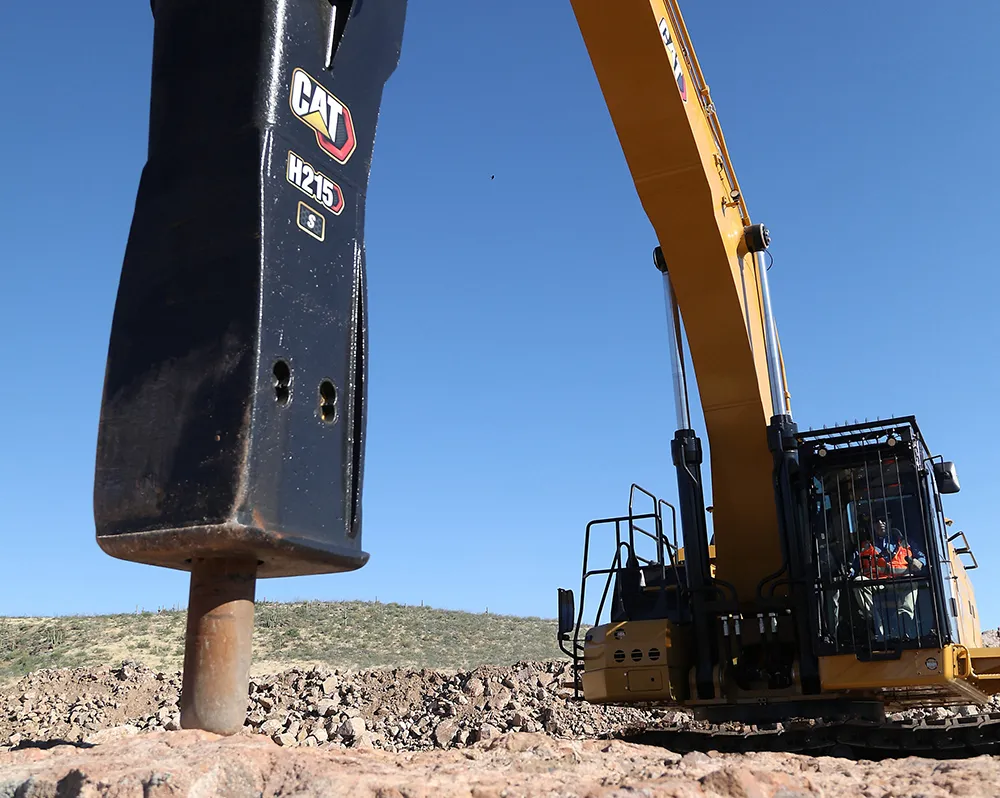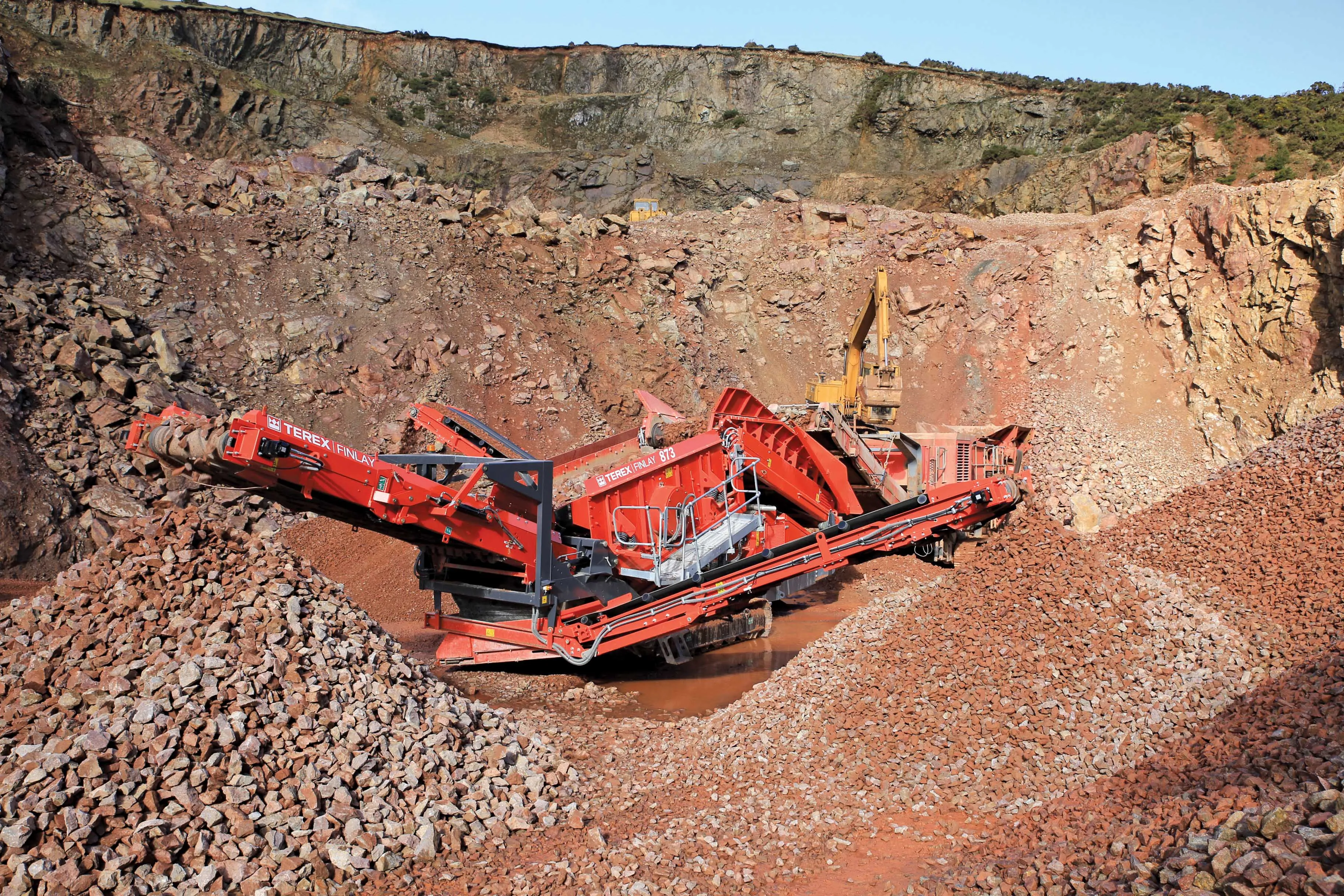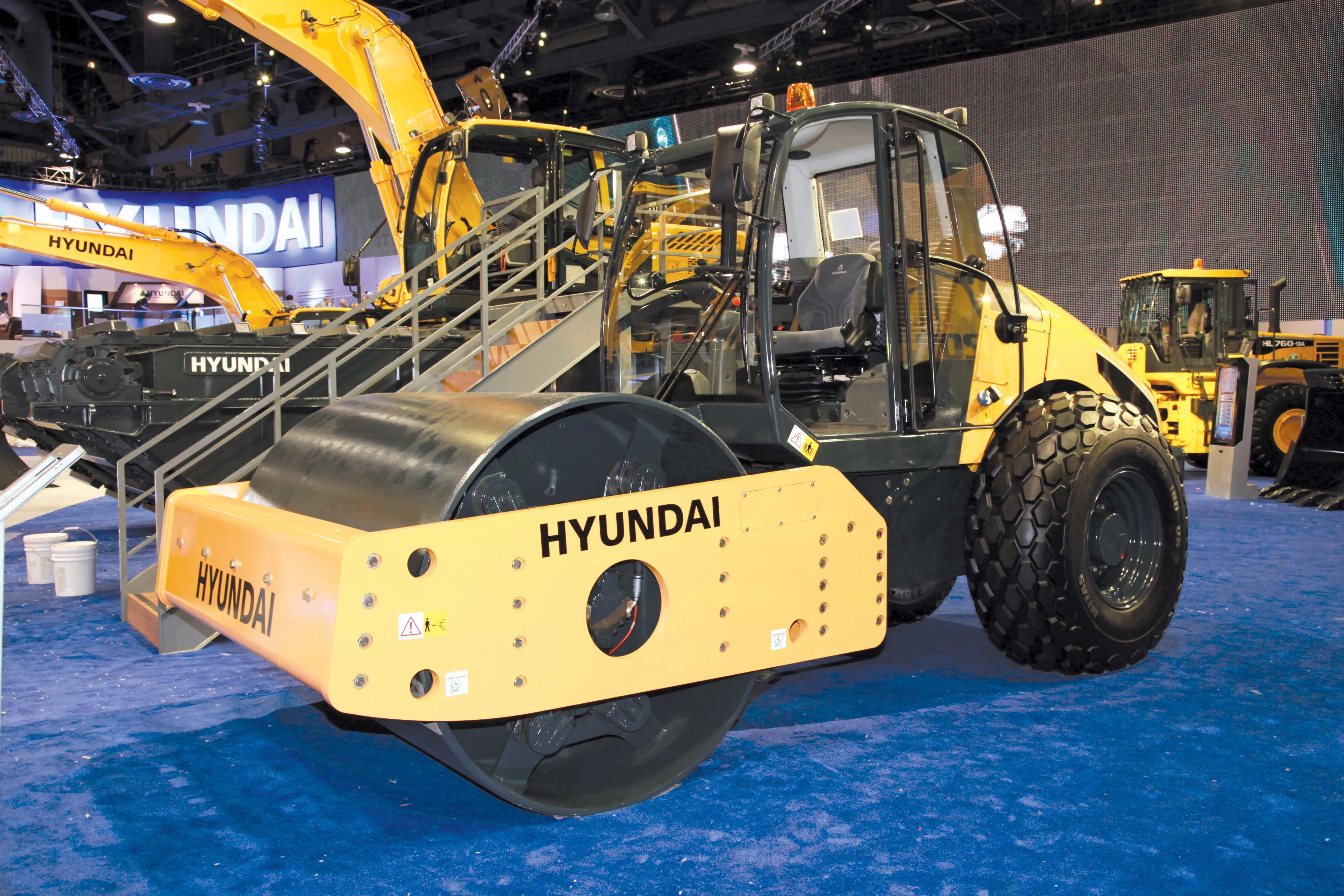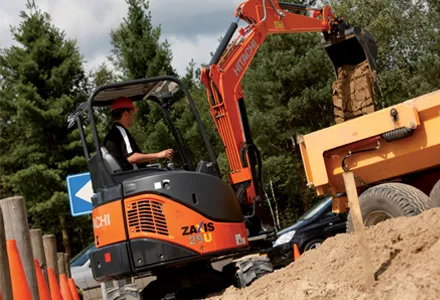
The two hammers are said to have efficient operating cycles, reducing wasted energy from internal heat and delivering more power to the tool. With piston and tool matched in diameter and mass, the hammers are said to offer high efficiency. Operators can switch modes from high frequency/low power to low frequency/high power, to suit the material being broken.
Cat says that the units also provide operator comfort and machine protection as proprietary buffering material dampens vibration to the carrier. An automatic shut-off prevents blank firing and hammer damage. This can be turned off for horizontal and overhead operation in tunnelling applications. The hammers can be configured for joystick or pedal control to suit the operator preference when working in quarry, demolition and construction applications. Auto Stop prevents hammering when the tool breaks through material, avoiding damage.
The new H190 S hammer is tuned to deliver high work rates with Caterpillar next gen excavators, and is sized for operation on Cat 349-374 models, while the larger H215 S is designed for the 374 and 395 excavators.
Next gen excavators automatically recognise the H190 S and H215 S Hammers and prompt operators to select the correct tool programme. Protecting the cab and keeping the attachment in predefined operating areas at the jobsite, the new hammer dimensions are included in Cat E-Fence technology.
Using the Cat excavators Product Link technology, users can locate the hammer attachment using the Cat App. Hammer pressure and flow rates are viewed on the in-cab monitor and can be configured manually or automatically using the display.
Cat says that daily checks and routine service can be performed without removing the new H190 S and H215 S hammers from the carrier. Steady internal gas pressure eliminates the need for frequent charge inspection. The lower bushing’s rotatable design optimises service life to minimise parts costs, while the bushing can be quickly serviced in the field.
A standard autolube system provides greasing during hammer operation to improve attachment longevity. For operating in extreme environments, an optional wear package protects the hammer housing.








